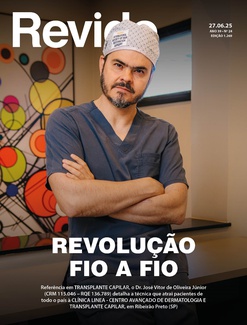
Supply Chain Due Diligence
China Daily, 05/09/11
One of the possible ways for a company to increase margins and capture value is looking at its supply chain (inputs needed for production) trying to make it more efficient. The objective here is to offer to China Daily readers a sequence of six steps to evaluate the company´s integrated supply chain (CISC) and to propose an action plan for improvements aiming to help in this important process.
These six steps start with the understanding of the supply chain and the functioning of the markets of its major inputs, then moves to a strategic analysis of the governance of these relationships inside the focus company and finally, proposes new forms for organizing these relationships in order to build safer, cheaper and more reliable supply chains.
Step 1 is to Understand the Company´s Integrated Supply Chain Structure. It involves studying what are the major inputs (products or services) purchased or internally produced by the focal company being analyzed, what are the costs involved (procurement costs, handling, transaction costs, production, stocks) and the way these transactions are done (governance forms, like contracts, markets and other forms).
After doing this strictly internal analysis, we move to step (2) which is to analyze The Market Characteristics of the Major Inputs. At this phase, several studies should be conducted to understand the number of suppliers, their products, brands, channels, prices, market shares and concentration; their selling behavior, technology and services offered, macro-environmental changes and risks, performances and other important characteristics of the functioning of these markets, in order to allow the company to understand if the markets can supply safely the input needed.
After performing the analysis of the current situation of the company at step 1 and how markets work in step 2, step (3) is a Diagnosis of Each Input of Company´s Integrated Supply Chain. We should here contrast how the company acquires and what are the market characteristics, in order to see if the company is performing well, or if other governance structure in the buying process could be better. What are the prices and resources given to a supplier versus the benefit of the input received or even to analyze if the focal company should rely on a single supplier or multiple suppliers, trying to lower risks, stimulate innovation, reduce dependency, acquiring flexibility and promoting suppliers competition are common questions asked.
We must remember that having multiple suppliers may increase purchasing transaction costs of a company. What are major vulnerabilities and risks and the degree of dependence on specific suppliers that the focus company has should be addressed. The purchasing transactions may be classified in a degree of sophistication of the relationships and, at the end the major result of step 3 will be a priority list for interventions. We should always consider that long-term goals of the company, traditions and internal resistance to change (cultural aspects and barriers) should be considered when organizing the supply chain.
After finishing these first three steps that brought to the strategists a diagnosis of the company, the market and the specific purchasing transactions, next step (4) would be to make a Proposal of a Governance Structure for Each Input of the Integrated Supply Chain. Now we are coming to the intervention moment of our process of supply chain due diligence. This proposal, for each input purchased, should consider governance form, economics and margins; value capture possibilities, specialization gains, reversibility possibilities (technology switch); adaptability, building entry barriers for competitors and if organizing a supply chain that promotes development and smallholders inclusion will give some access to official (Governmental) credit lines, as seen in some countries.
After the proposal of each relationship, possible suppliers should be procured and step (5) would be to Building the Contract (Relationship). This involves negotiation; how to consider macro-environmental changes; description and regulation of products, services, communications, payment and information flows; analysis of specific investments needed and the risks associated to these investments that may lead to opportunistic behavior and how to promote incentives and share results of competitiveness gains.
Once the contract is settled, and it can be formal (written) or informal (oral), comes the last step (6) that is the Management of the Relationship. It should be decided how it will be monitored, with regular meetings, boards, external evaluation committees; searching for excellence, continuous transactions costs reductions; having and sharing benefits of experience curve and of innovation gains. A continuous benchmark process and evaluation of alternatives (imports, for instance) can help, bringing motivation and avoiding the risk of accommodation in improving products, services and support. Also a shared and open communication platform can help in flexibility and responsiveness, permanently increasing trust. Finally, promoting networking and cooperation among different non-competitor suppliers of different products for learning and benchmarking is also a nice idea for the sharing experience process towards the improvement of the supply chain.
We offered here a 6 steps sequence to review the company’s supply chain and promote changes, planning and managing better ways to acquire inputs, services and other goods a company needs to produce and to be competitive. Hope it can be useful for the China Daily reader.
The author is professor of strategic planning and food chains at the School of Economics and Business, University of Sao Paulo (Brazil) and international speaker. Has 25 books published in 7 countries. ([email protected])


